Most landowners in Texas are interested in improving the habitat found on their property for native wildlife. Whether interested in managing for pollinators, songbirds, doves or deer, we often come to the realization that beneficial plantings are something we can do to improve a property.
Since not everyone owns a tractor, this article discusses how to overseed pastures and grasslands successfully to provide additional foods for wildlife and/or increase plant diversity.
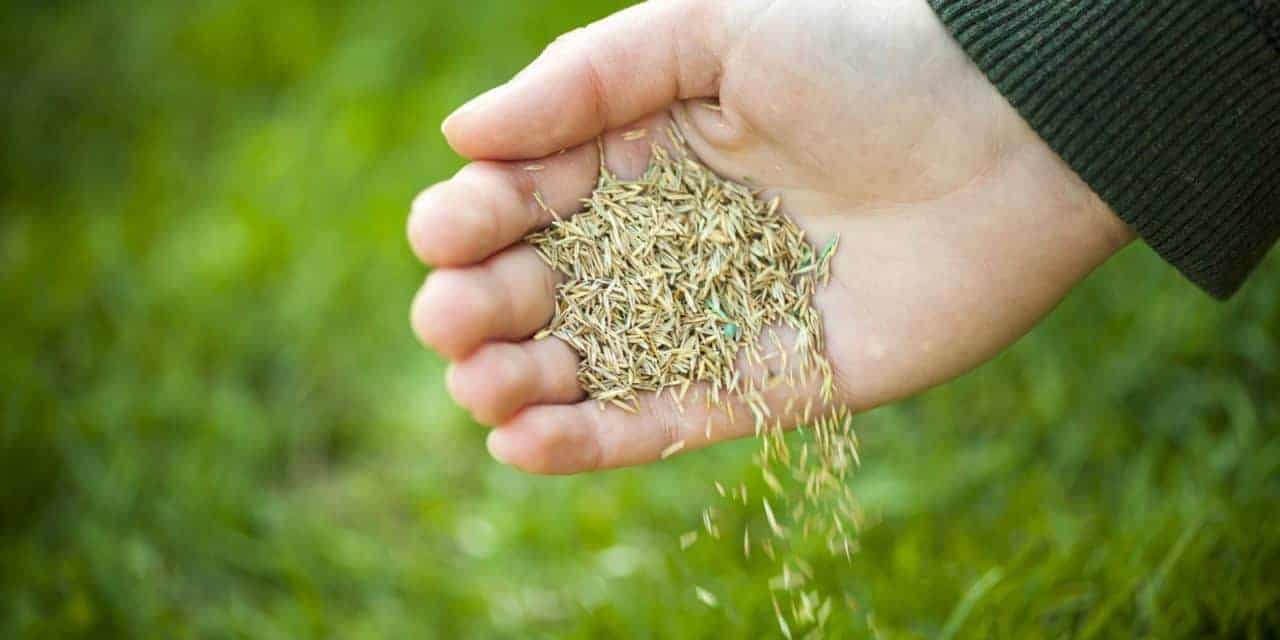
Let’s Talk Broadcasting
We are not talking about radio or television here. Broadcasting in land management terms is the act of planting or sowing seeds across the surface of the soil by mechanical means or by hand, more or less the way Mother Nature has carried out the process since plants have been in existence. The act of broadcasting seeds into existing vegetation is overseeding.
Broadcasting can take place with a purchased hand or shoulder-mounted seed spreader to speed things up or the process can be performed using only your hands, scattering handfuls of seed as you walk across the area being planted.
Smooth, hard-sided seeds can be scattered using a seed spreader, but fluffy or chaffy seeds are difficult to plant this way. They are so light and fluffy they just will not flow through a commercial seed spreader unless carrier is blended with fluffy seed. Sand, rice hulls, unscented kitty litter and certain grains can be added to chaffy seeds to enhance their flow through a commercial spreader.
Fortunately, both smooth and fluffy seeds can be distributed by hand, allowing most landowners to get the job done with nothing more than a bag or bucket of seed. Regardless of the route you go, the rest of this article offers some tips on how to successfully overseed into existing vegetation.
What is Overseeding?
Overseeding is the process broadcasting seeds into existing vegetation without disturbing the soil. This method of planting is often used in established yards by homeowners and improved pastures by ranchers, but this practice can also be used on lands managed for wildlife.
Overseed at the Right Time
First and foremost, make sure you are targeting the proper time of the year for the seeds that you intend to plant. To do so, you need to know a little bit about the seeds that you’re about to introduce to your property. Overseeding should take place when the chance of seed establishment is high, so mostly during spring and fall.
Once you know which season you are targeting, narrow your timing even more to put the odds in your favor. Watch the weather. Ideally, you’d like to broadcast when rain looks imminent. Mother Nature deposits seeds well in advance of when they germinate, but you would rather reduce the amount of time your seed sits idle on the ground.
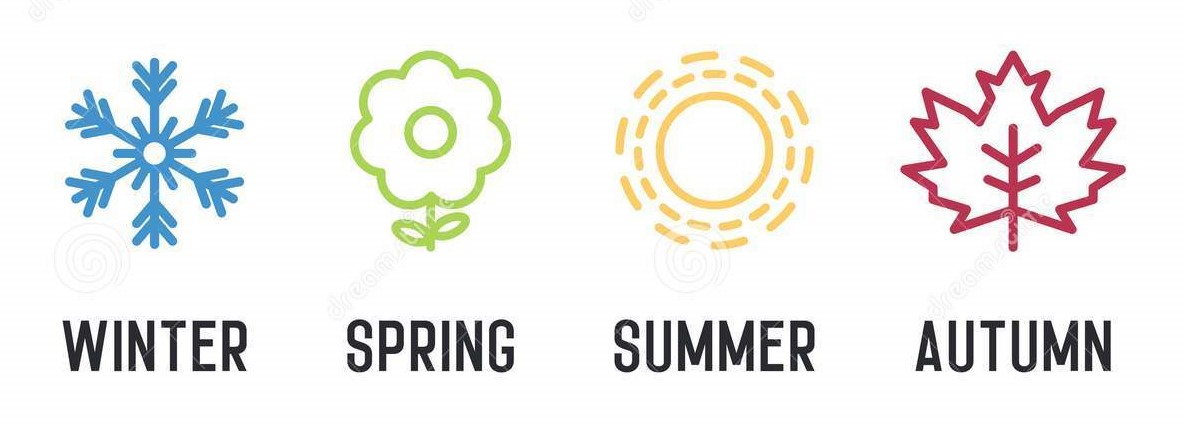
This is especially true when planting things such as millets, sorghums, corn and cereal grains such as rye, wheat and oats. These are large seeds that wildlife will readily consume — that’s why you are trying to plant them!
It’s good to wait until that “just right” time in most cases, but not always. Many wildflower seeds to be broadcast well in advance of spring. This is because they actually germinate or begin growing during the winter. Furthermore, some of forb seeds need to experience the freezing process that winter offers before these seeds will germinate. Learn about the seeds you plan to plant before you purchase them.
Site Considerations & Preparation
Is the soil in the area where you intend to broadcast suitable for the seeds you intend to overseed? If you broadcast seeds into dense vegetation it is unlikely that they will be successful; the top of the soil will be completely covered and seeds are unlikely to get the conditions they need to germinate.
In such cases, either choose another site with suitable soils or consider prepping your site for overseeding. One way to reduce vegetation is to spray the target area with a general herbicide such as glyphosate. This is the active ingredient in the well-known product Roundup (as well as many other herbicides).
Spraying can be accomplished using a backpack sprayer and is best suited for areas where an undesirable, single-species monoculture exist. For example, sites that are dominated by broomweed, giant ragweed, or other undesirable natives and exotic grasses such as bermuda grass, bahiagrass, Johnsongrass, and Kleberg (often referred to as King Ranch) bluestem are ideal candidates for herbicide application.
If you plan to use a herbicide to prepare a site, consider doing so well in advance (5 months) up to two weeks prior to overseeding. Don’t apply glyphosate any closer than two weeks prior to broadcasting your seeds. Do apply glyphostate when plants are actively growing. Always follow label instructions!
If there is excessive dead-plant debris on the ground (after spraying) then consider raking the ground to open up some bare ground.
But herbicide is not the only game in town, and it’s not always warranted. Another option to reduce competition between your seeds and from existing plants is by mowing. Mowing can open up the soil and make overseeding more successful.
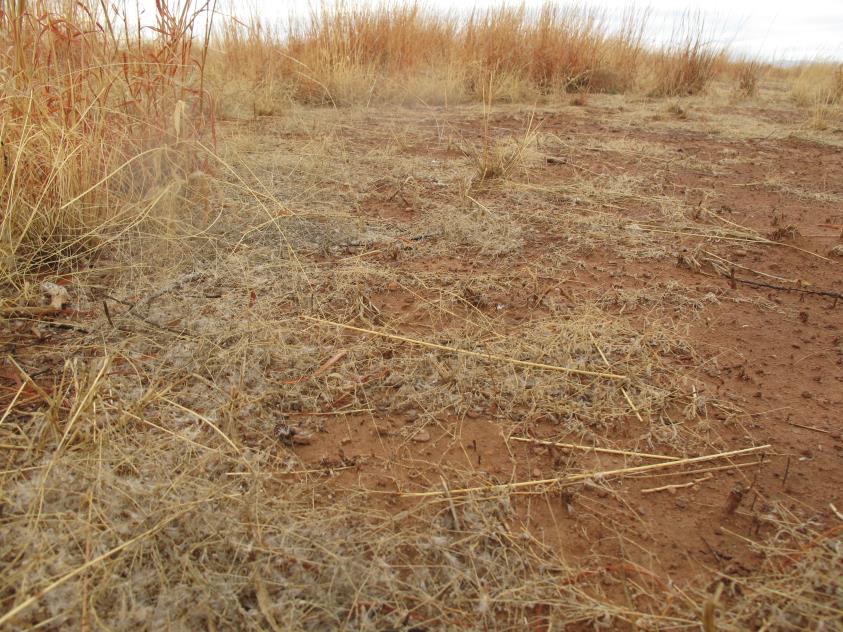
One strategy is to broadcast the seed into the target area and then immediately mow to cover the seed. This is a good strategy when existing, native vegetation is moderately tall, but ample bare ground exist. This allows good seed-to-soil contact from below and protective cover from above.
It can be difficult to successfully overseed into established non-native pastures during the warm season (spring through early-fall) without using herbicide. These grasses are often closely spaced, aggressive growers and leave little to no bare ground available for seed placement.
However, non-native grasses go dormant during the cool season (late-fall through winter). It’s at this time of year when landowners can successfully broadcast a variety of clovers and cereal grains such as rye, oats, and wheat into such areas. Mowing prior to overseeding will increase germination rate of broadcasted seeds.
Overseeding for Food & Cover
If your goal is to enhance your property for certain wildlife then it’s paramount that you know a little about the life history of the animal/s you are trying benefit. All wildlife need food, cover, water and some amount of space. Overseeding is most commonly used to provide supplemental food, but it can also be used to develop supplemental shelter in areas where vertical cover is sparse.
There are many choices when it comes to seed-eating songbirds, doves, quail and turkeys. In these situations, you want easy-to-establish plants that produce a ton of seeds that serve can serve as high quality food plots. In this situation, warm season annuals such as millets, milo and other sorghums fit the bill. They are relatively inexpensive ($5-$15 per acre, )grow and mature rapidly (especially millets) and produce a tremendous amount of food.
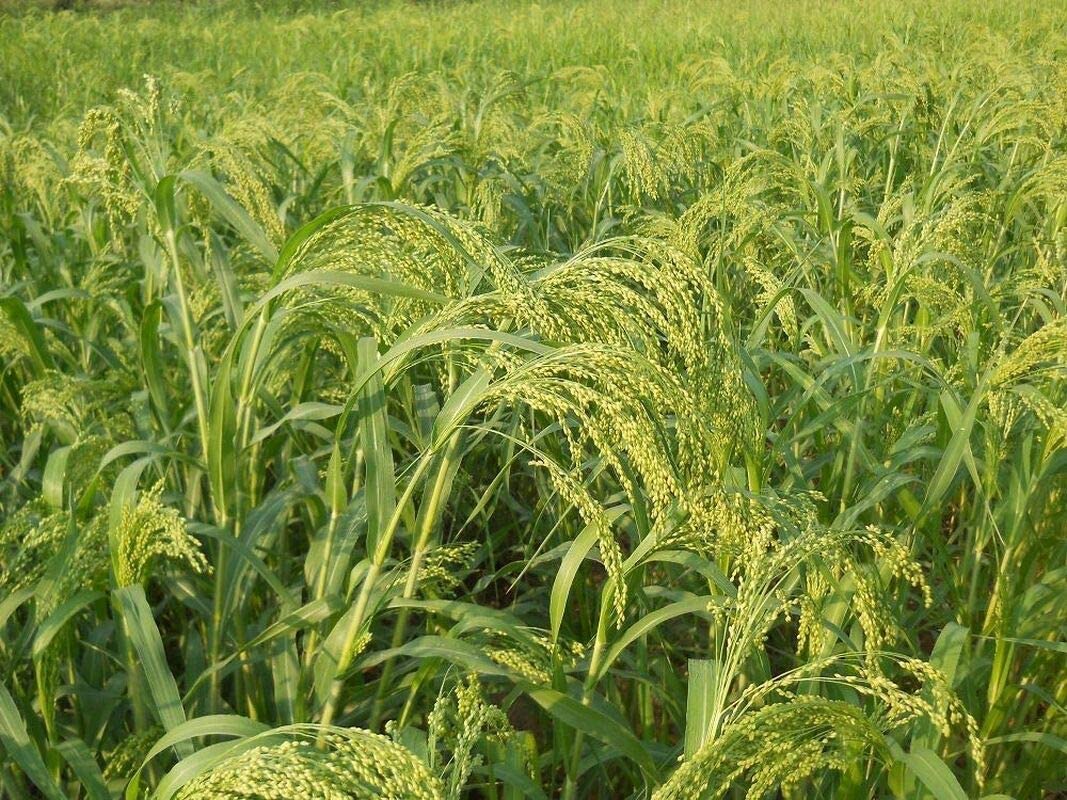
Cool season annuals also work for seed-loving wildlife, but you have to overseed well in advance of when wildlife need the seeds. Rye, oats and wheat are readily-available options that work in these situations. The foliage (leaves) of these plants are also attractive to deer and turkey in the fall. Though these plants need to be broadcast planted in the fall, their seeds will not mature until early summer of the following year.
Native perennial plants are the best option when it comes to developing permanent habitat for wildlife, though they will not provide the amount of food in pounds per acre that many of the aforementioned plants will produce. However, deep-rooted perennials have another advantage; once they are established they can persist for many years.
Perennials can be overseeded to provide supplemental food or for range enhancement. These types of plants are often referred to as wildflowers. Wildflowers are especially important to those that animals that carry out the process of pollinators, bees and butterflies.
If you decide to plant a “pollinator plot” then you do want to use a mix. A mix insures that a variety of seeds hit the ground, which increases at least some of them will love the conditions they are planted into. Fortunately, there are a variety of commercially available wildflower mixes. Unfortunately, they are fairly expensive, ranging from about $40-$80 per acre. If conditions are right, however, a mix only needs to be planted to a site once for rangeland enhancement purposes.
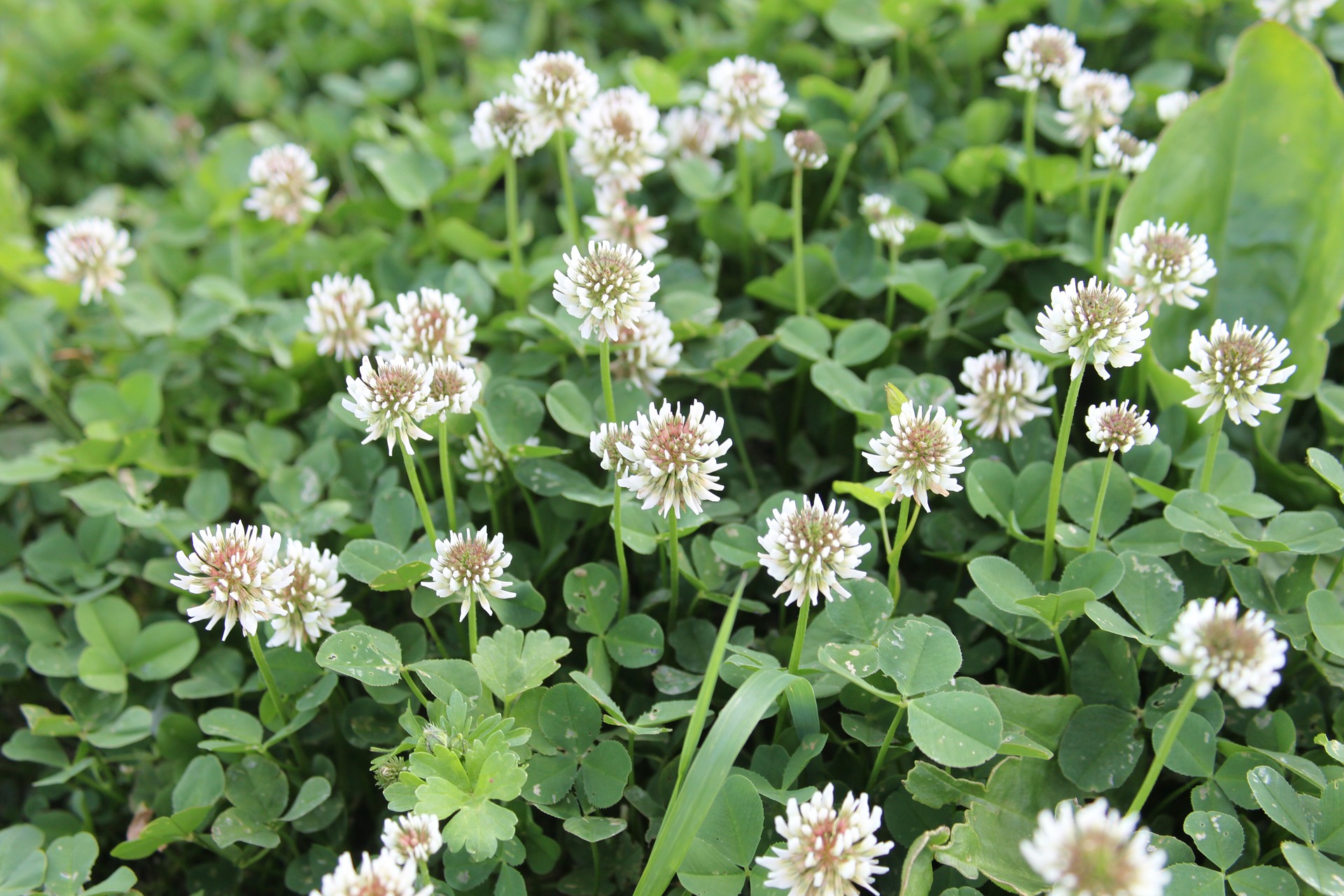
Another good option for providing supplemental food for wildlife includes clovers. There are a variety of clovers and at least one of them is likely well-suited for your property. Clovers can serve as forage for deer and turkey, and their flowers can be used by pollinators, but they also enhance the very range on which they grow by fixing nitrogen. This helps established, native plants do better than they normally would, which means improved growth and higher seed production.
Overseeding: Planting Rates
Once you’ve identified a plant or mix of plants that is suitable for the environmental conditions (soil and precipitation) of your property and meets your objectives, then it’s then time to carefully consider the planting rate.
Most wildflower/forb mixes that are sold commercially will recommend a planting rate. In these cases, simply follow the coverage rate and directions on the packaging. These forb mixes may not always fit the bill, however. You may find forb blends lack many of plants you want or simply contain many more species that you need.
In these situations, you may consider buying seeds a la carte from seed dealer in an attempt to put together an ideal mix for your property and your needs. This is often a good idea, just do your homework before buying a bunch of seeds. For common wildlife plantings, the table below offers recommendations.
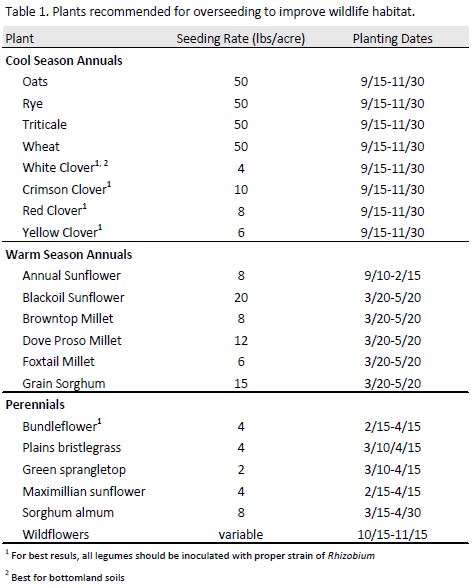
Compress Your Seeds
One way to improve the germination of your seeds and subsequent growth is to ensure good seed-to-soil contact. A seed needs water and the adequate thermal conditions to germinate, but it also needs soil to root into. We can germinate a seed on a wet paper towel, but it will not survive.
Consider compressing your seeds into the ground after overseeding an area. This is not absolutely necessary, but to up the overall success of your seeds consider driving an ATV or UTV over the area to enhance that seed-soil contact. Another option is to just walk through the area, pressing seeds into the ground with each step.
Commercial Seed Dealers in Texas
There are a number of businesses that sell native grasses, forbs and grains that are often planted to enhance habitat for wildlife. The mixes they sell will vary, as will their prices. Turner Seed Company has been a favorite of ours because of their great service, variety of seeds and reasonable prices.
Just Add Water
Once you’ve got the site, the seed and knowledge, then it’s about picking the right time to broadcast. Timing, as with everything in life, is very important when planting seeds. This is especially true with overseeding.
Seeds the right environmental conditions to germinate and grow. The three main components are temperature, water and seed-to-soil contact. Again, know the life history of the plants you intend to broadcast. Are they warm season or cool season plants?
Once you’ve generally identified the time of year, then start watching the weather. Fine-tune your overseeding efforts so that your seed hits the ground immediately before a rainfall event — or better yet, several days of wet weather. This will decrease the amount of time your seed sits dormant, and vulnerable, on the soil and greatly increases the success of your planting.
